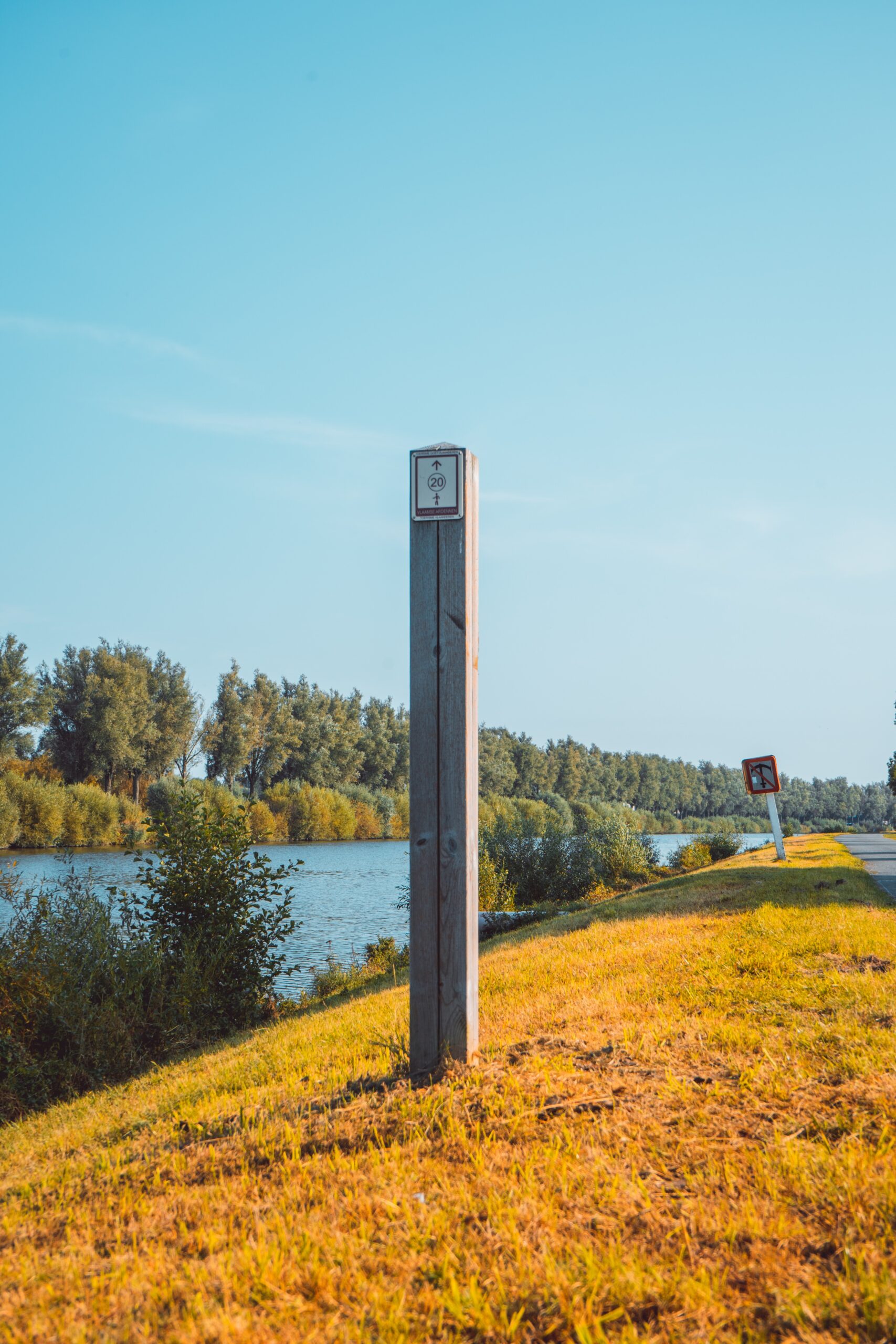Have you ever found yourself lost in a sprawling shopping center, desperately trying to find your way to your desired destination? That’s where the importance of wayfinding signage in shopping centers comes into play. It’s something we often take for granted but without them, a quick shopping trip could easily turn into a confusing labyrinth adventure. This article explores the significance of these guiding tools and how they contribute towards creating a user-friendly and efficient shopping environment. As you explore this write-up, you’ll gain a clearer understanding of their critical role in enhancing the shopping experience for consumers like yourself.
Concept of Wayfinding Signage
In everyday life, you are often bombarded by various visual cues and signs to navigate complex spaces or understand unfamiliar environments. One such critical visual aid is wayfinding signage.
Definition of Wayfinding Signage
Wayfinding signage is a specialized type of environmental graphics designed to provide direction and guidance to people in public spaces. It can be as simple as an exit sign in a building or as complex as a network of signs in a large shopping center. Wayfinding signs answer three basic questions: Where am I? Where is my destination? How can I get there?
Different types of Wayfinding Signages
Several types of wayfinding signs are seen in different settings. They typically include identification signs (denoting specific services, levels, or facilities like restrooms), directional signs (indicating the route to a particular location), informational signs (providing details about the site, rules, and regulations), and regulatory signs (directing behavior through instructions like “no smoking”). In complex spaces like shopping centers, all these types often coexist, creating a comprehensive wayfinding system.
History and evolution of Wayfinding Signage
The concept of wayfinding is ancient, with early humans using natural landmarks and celestial objects for navigation. As societies grew and built environments became more complex, the necessity for more explicit wayfinding aids emerged. Wayfinding signage has evolved from simple stone markers, wooden placards, and painted directions to digital screens and interactive displays today, reflecting the technological advancements and changing user needs.
The Role of Wayfinding Signage in Shopping Centers
In a bustling shopping center, wayfinding signage plays a crucial role. It’s not simply about navigating space; it’s about enhancing the customer experience in multiple ways.
Influence on customer behavior
Well-designed wayfinding signs subtly guide your actions and decisions in a shopping center. They can direct you towards promotional sales or new stores, influence your path through the layout, and even affect your pacing and pause points.
Impact on overall shopping experience
Effective signage within a shopping center certainly improves customer satisfaction. Wayfinding makes the shopping experience smoother, less tiring, and more enjoyable by reducing the time and energy spent trying to locate stores or facilities.
Enhancing accessibility
For elderly people, the differently-abled, or anyone unfamiliar with the shopping center’s layout, wayfinding signage is an indispensable accessibility tool. Easy-to-read and strategically placed signs aid in increasing a center’s inclusivity, making it accessible for everyone.
Reducing customer anxiety and stress
Finding your way in a vast shopping center can be intimidating for some customers, creating undue stress and potentially discouraging return visits. Efficient wayfinding signage reduces such anxieties by providing clear pathways and reassuring guidance that contributes to a more relaxed shopping atmosphere.



This image is property of images.unsplash.com.
Design Elements of Effective Wayfinding Signage
Wayfinding signage isn’t just about informational text on a board. It involves clever design strategies that enhance visibility and comprehension.
Legibility and Visibility
Clear, large fonts, high-contrast colors, and suitable lighting help make signs easy to read from a distance. This ensures that customers spot them in time to make appropriate route decisions.
Consistency in Design
Maintaining a consistent design among all signs aids in recognition and understanding. That includes similarities in font, color scheme, visual style, and sign placement, giving a sense of cohesion throughout the shopping center.
Use of Colors and Symbols
Colors and symbols can convey information faster than text, serving as effective visual cues. They can also be used to delineate different zones or levels, or indicate specific types of facilities such as restrooms or elevators.
Proper Placement and Orientation
Signs should be placed at strategic points along the customer’s line of sight and oriented based on their expected approach direction. This could include overhead signs at corridor intersections, wall-mounted signs beside store entrances, or floor graphics in front of elevators.
Impact of Wayfinding Signage on Sales and Revenue
Well-designed wayfinding signage isn’t just helpful to customers; it can also directly impact a shopping center’s bottom line.
Influence on impulse purchases
As signage guides customers along a certain pathway, it strategically exposes them to more stores, products, and promotional displays. This can trigger impulse buying, thereby boosting sales.
Increased dwell time leading to higher purchases
Effective wayfinding keeps the customers engaged and comfortable, encouraging them to spend more time within the shopping center. As a result, they are likely to visit more stores or make more purchases.
Building of path habits
Consistent and user-friendly signage can lead to customers developing path habits—they tend to follow the same paths during return visits. This familiarity can lead to increased visit frequencies, forming loyal customer bases, and driving regular sales.



This image is property of images.unsplash.com.
Contribution to Branding and Marketing
Beyond its functional aspects, wayfinding signage also serves as a touchpoint for branding and marketing within a shopping center.
Seamless integration with brand image
Signage designs that echo the overall aesthetic of the shopping center contribute to the stronger brand image. They can communicate the brand’s identity, message, and values to the customers.
Promotion of particular stores or services
Wayfinding can be utilized to highlight stores, special features, or services within the center. By setting these entities apart on the signage, they become more memorable to customers, increasing their recognition and recall.
Increasing recall and recognition of retail brands
Repeated exposure to certain names and logos on wayfinding signs enhances customer recall, helping individual retailers within the shopping center to strengthen their brand recognition.
Case Studies of Effective Wayfinding Signage Deployments
The best way to understand wayfinding signage’s benefits is to look at successful implementations.
Successful implementations
Many shopping centers worldwide have harnessed the power of effective wayfinding signage. For example, some large multi-level centers have adopted color-coded levels or sections, paired with intuitive pictograms and easy-to-read directional signage, leading to increased customer satisfaction and sales.
Reinvention and innovative approaches
Many locales have reinvented their wayfinding strategies to cater to modern shoppers. This includes the implementation of digital signage, interactive kiosks, and even augmented reality guides, driving engagement, and adding a novelty factor.
Impact on customer loyalty and sales
The ultimate testament to effective wayfinding signage is its positive impact on customer loyalty and sales. Case studies often indicate that after signage redesigns, many shopping centers have witnessed increases in repeat visits and average spend per customer.



This image is property of images.unsplash.com.
Role of Technology in Wayfinding
With evolving technology, wayfinding signage has also embarked on a digital transformation.
Digital wayfinding solutions
Digital signs, interactive kiosks, and large format displays provide dynamic, customizable, and easily updated wayfinding solutions. They can display real-time data, adapt to changes in layout or store locations, and even provide personalized directions.
Incorporation of interactive touchpoints
Interactive touchpoints where customers can access maps or input their desired destination are an added benefit, making wayfinding an engaging task rather than just a necessity.
Use of mobile applications and QR codes
With the widespread use of smartphones, wayfinding has gone mobile. Apps can provide real-time location tracking and personalized directives, while QR codes on physical signs can lead customers to additional online information.
Challenges in Implementing Wayfinding Signage
Although beneficial, implementing effective wayfinding signage presents certain challenges.
Managing space constraints
Often, shopping centers have to work around space constraints to install their signage. Strategy and careful planning ensure signs are placed at viable locations without hindering the flow of foot traffic.
While staying consistent with brand aesthetics
Creating wayfinding signage that aligns with the overall look and feel of the shopping center can be daunting. Designers must strike a balance between the brand aesthetics and the signage’s readability and effectiveness.
Ensuring updated and accurate information
Keeping signage updated with accurate information is critical. Outdated or incorrect signs can lead to customer frustration, negating all the benefits of a good wayfinding system.
Balancing information load
The amount of information included on each sign needs to be carefully curated. Overloading signs with excessive information can overwhelm customers, while too little information can be of limited help.
The Way forward for Wayfinding Signage
Anticipating the future makes a satisfactory journey. Several trends are predicted to shape the future of wayfinding signage, and embracing them will be key to staying relevant.
Predicted trends in signage design
One foreseeable trend is the increased use of interactive and dynamic signage. Simple, clean designs with high visual impact are also likely to be popular.
Increasing importance of digital signage
As shoppers become more digitally savvy, the demand for digital wayfinding solutions is likely to grow. They offer the advantage of real-time updates, personalizability, and interaction, making them an attractive option for modern shopping centers.
Adaptation to changing customer behaviors
As customer behaviors and expectations evolve, so too must wayfinding signage. This might mean integrating social media connectivity, supporting multi-language options, or incorporating new technologies such as augmented reality.
Conclusion: Measuring the Success of Wayfinding Signage
Investing in wayfinding signage only makes sense if it brings measurable benefits.
Tools and techniques for assessing effectiveness
Various tools are available to gauge a wayfinding system’s success. These could include customer surveys, walkthroughs and simulations, or tracking technologies to analyze path patterns and dwell times.
Customer feedback and responses
Customer feedback is also an invaluable measure of success. It can unearth any confusion or areas of improvement that might not be evident through other means.
Wayfinding Signage as part of retail success metrics
Ultimately, improvements in key retail success metrics such as sales, average spend per customer, and repeat visit rates can hint at the effectiveness of the wayfinding signage. It’s clear that well-implemented wayfinding signage can greatly enhance a shopping center’s environment, but the true measure of its success lies in the satisfaction of the people who navigate that space — you, the customer.
